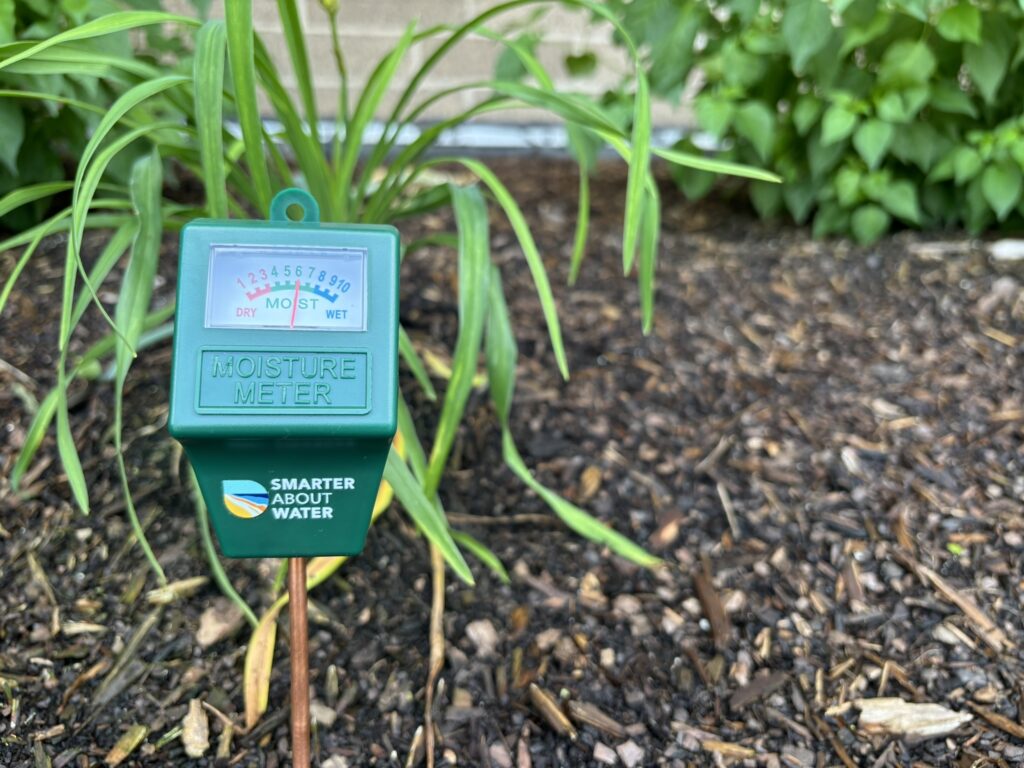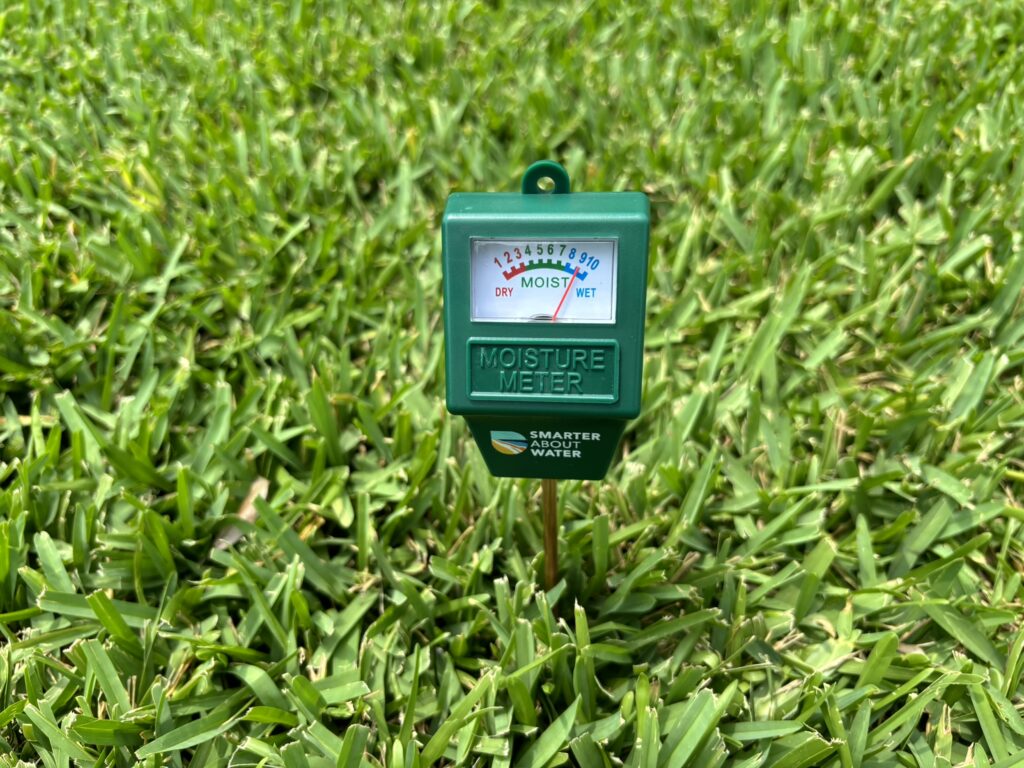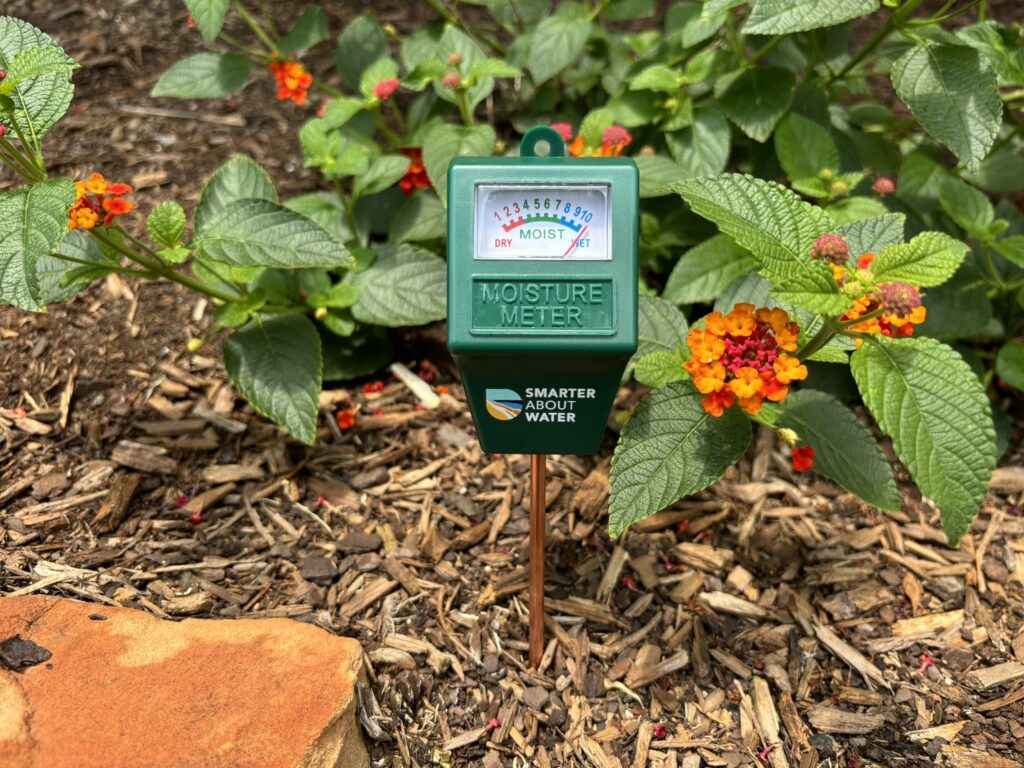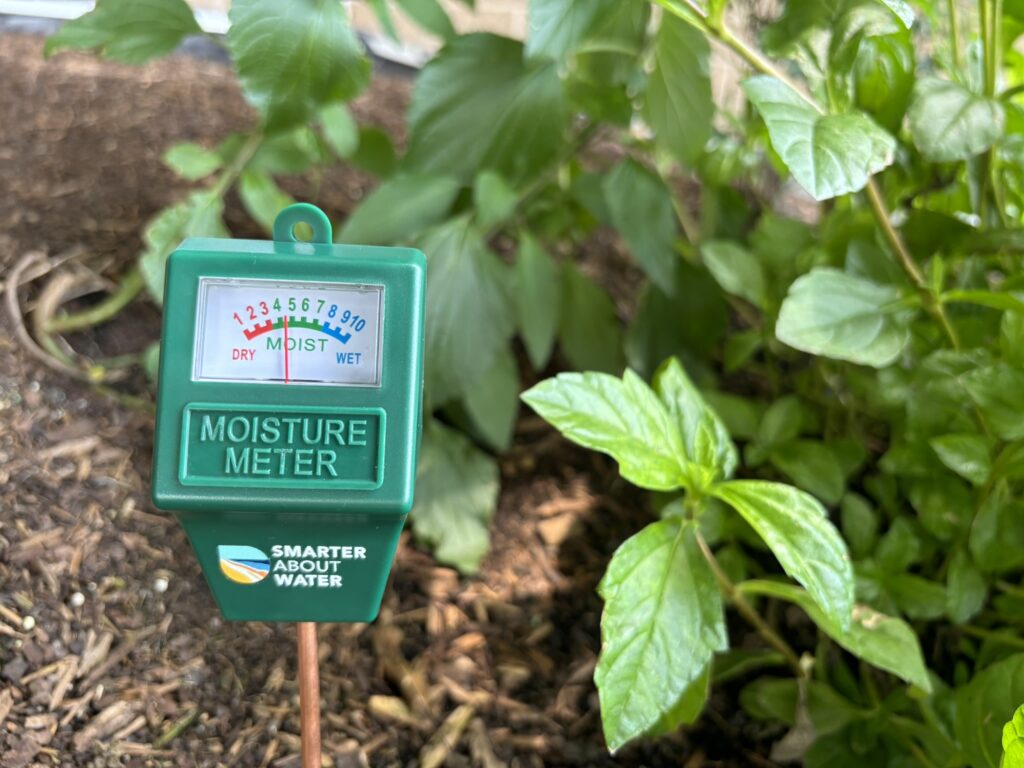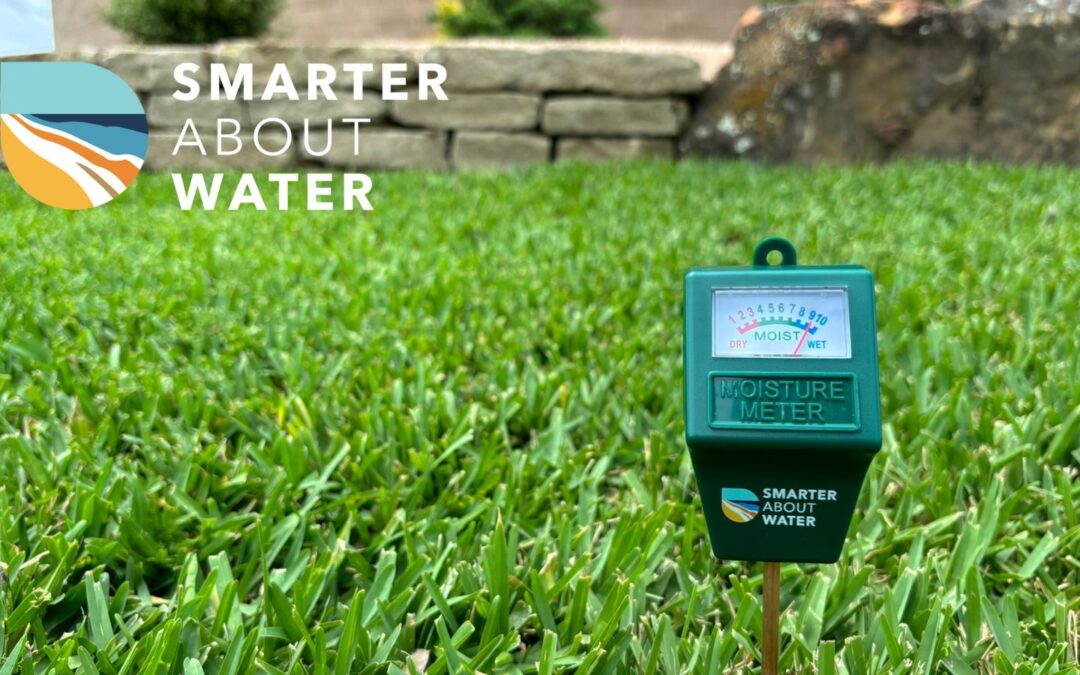Inefficient irrigation can waste up to 50% of water from evaporation and runoff. A moisture meter is used to measure the soil’s humidity, indicating when watering is needed to help conserve water and ensure an adequate amount is provided. This meter can be used in the garden, on the lawn, or for houseplants. It measures at the root level, so be sure to use the cycle and soak method for deep root watering for trees or lawn. To learn more about ways to improve your lawn or garden for greater water efficiency, click here!
How to use the moisture meter:
- If the probe has a protective cap on the tip, remove it and replace it after measurements have been taken.
- Insert the probe into the soil, 6 to 8 inches deep, or approximately half the probe’s length.
- It is easier if the soil is soft; sticking the instrument into hard soil may break it. TIP: Use a flat-head or similar tool to loosen the soil.
- A reading can be taken within 30 seconds. The needle will stop moving once it has measured the moisture level.
- Readings can be taken before and after watering. Wait about 15 minutes after watering to allow the soil to fully saturate for a more accurate reading.
- When taking measurements for a lawn or large area, take readings from multiple spots.
- Keep in mind that some plants, such as desert plants, may prefer less water, while others require more.
- Here are some recommendations from the moisture meter manufacturer:
- RED ZONE: Dry to slightly humid, for plants such as Cactaceae, thick-leaved plants, and Sansevieria.
- GREEN ZONE: Slightly humid to humid, right for most plants, such as Begonia, Cyclamen, Euphorbia, Ficus, Fuchsia, Philodendron, Geranium, Saintpaulia, Azelea, Adiantum.
- BLUE ZONE: Very humid, do not water or drown plants.
- Wipe the probe clean and replace the cap on the tip.
- It is not recommended to leave the moisture meter in the soil for extended periods to maintain the instrument’s integrity.
